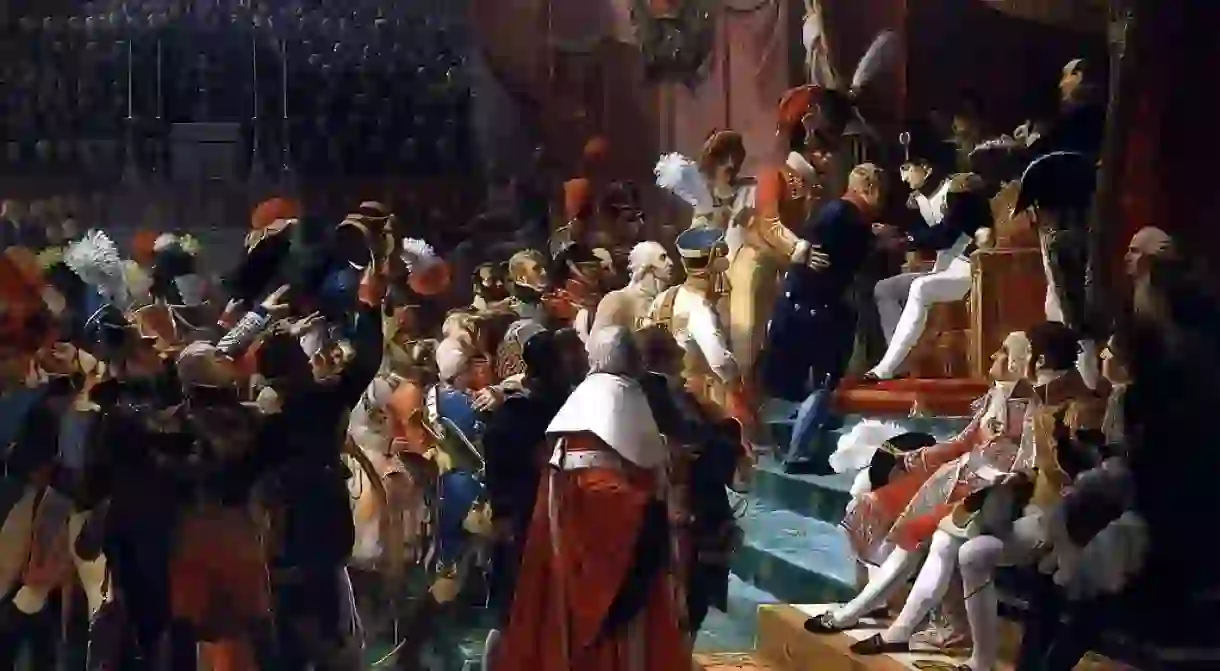A Brief History Of The Légion D'Honneur

The Légion d’Honneur is France’s highest decoration, presented for over two centuries by the Head of State as a ‘reward for outstanding merit acquired in the service of the nation in a civilian or military capacity.’ Three thousand people receive the honor every year, some of whom are international celebrities and others whose work has benefitted an unknowing public.
Napoleon Bonaparte, in his capacity as First Consul, became aware of the need to restore a comprehensive system of rewards similar to the ancient honorific codes, which the Revolution had done away with, but which respected the equality of citizens. His three visionary objectives were to reconcile a wearied French people after ten years of infighting and instability, to reunite them around a common ideal of individual and national honor, and to ally military and civilian achievements as a symbol of a strong, unified State. On May 19, 1802, the founding of the Légion d’Honneur was approved by 56 votes to 38 in the Tribunat and 166 votes to 110 in the Corps Législatif.

From the beginning, Napoleon decorated ‘his soldiers and his savants,’ choosing from Marshals of the Empire and veterans of the Revolutionary Wars, as well as senior civil servants, judges, doctors, industrialists, scientists, artists, architects, musicians, and writers. By the end of the Second Empire, a changing French society was reflected in the inclusion of more entrepreneurs and charity workers; however, military personnel still made up three-quarters of the order.
Before the start of World War I, membership stood at approximately 45,000. The innumerable acts of bravery and sacrifice that the conflict engendered led to a change in the award criteria and a drastically increased number of recipients. This expansion continued through World War II, the Indochina War, and the Algerian War, until in 1962 it counted 320,000 members. Fearing that the prestige of the honor was in danger of being undermined, President Charles de Gaulle instituted major reforms, including the cap on living members at 125,000.

The order was again revised in 2007 this time to create gender parity among civilian recipients, a new class for volunteers in the non-profit sector, and a public nomination system for deserving individuals who might have escaped ministers’ attention.
The award itself is composed of a red ribbon and a badge in the shape of a five-armed Maltese asterisk topped by a wreath of oak and laurel. On the face is Marianne, and on the back are two tricolor flags and the order’s motto of Honneur et Patrie (Honor and Homeland). The seat of the order is the Palais de la Légion d’Honneur, to which a dedicated museum is attached.

To date, nearly one million citizens have received the award, and 93,000 of them are alive today. Two-thirds of new recipients are civilians, and 400 of them are foreign nationals, although they cannot become members. Their average age is 58, reflecting the need for 20 years of service prior to consideration. The order has three ranks – Knight, Officer, and Commander – and two titles – Grand Officer and Grand Cross – with 80% of members falling in the first of these categories. Promotion through the ranks is possible after a set time and if the member displays new merit.
Exceptional awards are also given to people who don’t meet the standard criteria, but who have performed extraordinary acts of public service, such as risking their lives in the line of duty, or to those who have lifted the national spirit and status, for example, with an outstanding sporting achievement.













